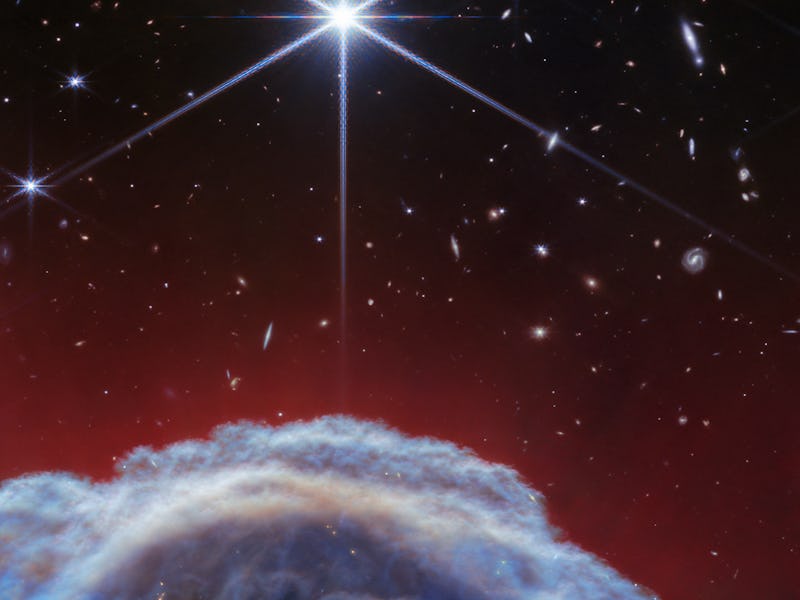Whoa! The Webb Telescope Zoomed Way into the Iconic Horsehead Nebula
This dense cloud of interstellar gas is 3,000 light years away, but it looks close enough to touch.

The James Webb Space Telescope (JWST)’s Mid-Infrared Instrument (MIRI) and Near-Infrared Camera (NIRCam) recently zoomed in on the starlit edge of the Horsehead Nebula.
Astrophysicists hope the new images — along with measurements of the spectrum of light coming from the nebula — will shed new light on the complicated chemistry that turns dense gas clouds like the Horsehead Nebula into starter kits for future star systems, already outfitted with a supply of dust, ice, and complex organic molecules.
Over the years, astronomers have used a series of space telescopes to get more and more detailed images of the Horsehead Nebula.
The Horsehead Nebula looks just like what its name implies: the cloudy silhouette of a horse, sticking its head up for a look above the surrounding clouds of gas and dust. It’s actually a plume of especially dense gas, left behind when stellar winds carved away the wispier material around it (like a gassy version of the sandstone pillars carved by erosion here on Earth). And in cosmic terms, the Horsehead Nebula is a fleeting sight: It, too, will erode in about 5 million years, based on physicists’ computer simulations.
This video uses data from the ESA’s Euclid Space Telescope, the Hubble Space Telescope, and JWST to create an animated flight through space to the top of the Horsehead Nebula.
New stars are forming in the nearby clouds of interstellar gas, as dense clumps of gas collapse under their own mass. The powerful ultraviolet light from those stars has already eroded away the lighter gas around the Horsehead Nebula, and it’s what lights up the nebula itself. In the process, the radiation also triggers chemical reactions in the gas, and on the surfaces of dust grains. Some of those reactions could eventually lead to chemicals essential for life.
MIRI and NIRCam view the universe in slightly different wavelengths of light, so each instrument’s image of the nebula looks slightly different and contains slightly different information for scientists. You can compare the two on the European Space Agency’s website.